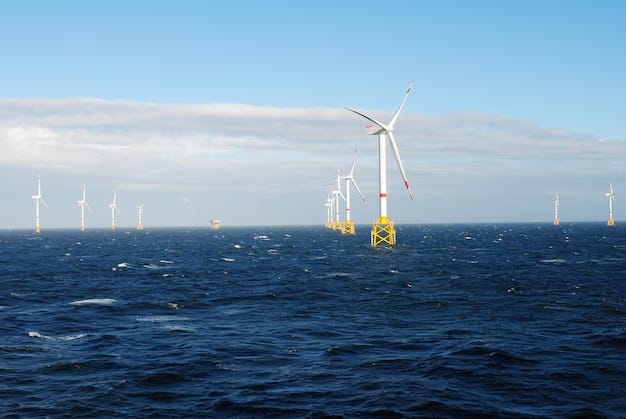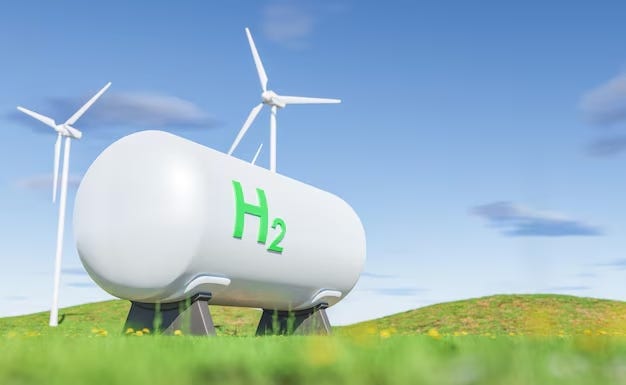
Introduction
As the world grapples with the escalating impacts of climate change, the quest for sustainable energy solutions has never been more urgent. Energy consumption, a significant contributor to global greenhouse gas emissions, necessitates an immediate and scalable response. Recognizing the importance of innovation in this sector, this article aims to explore four groundbreaking energy technologies. These initiatives not only demonstrate significant potential for reducing environmental footprints but also hold promise for replication on a global scale. By delving into these technologies, we seek to highlight paths forward that can unite communities, governments and industries in the sustainable transformation of our energy systems.

1. Offshore Wind and Floating Solar
The renewable energy landscape is evolving rapidly with the adoption of offshore wind farms and floating solar panels. Positioned in deep waters, offshore wind farms leverage the stronger and more consistent sea winds, significantly enhancing their power generation capabilities. Simultaneously, floating solar panels utilize the surface of water bodies such as lakes and reservoirs. These installations not only conserve valuable land but also perform better due to the cooling effects of water, which increases their efficiency.
These technologies, thanks to recent advancements, are now more viable and cost-effective. They offer substantial benefits over traditional methods by utilizing less contested spaces and reducing environmental impacts on land ecosystems. The scalability of offshore wind and floating solar across diverse geographical locations, from Europe’s windy coasts to the sunny water bodies of Southeast Asia, demonstrates their global potential. Nishant Idnani of Vaultus Green Funding notes their emerging importance during a recent Global Investment Leaders Club (G.I.L.C.) gathering: “Offshore wind and floating solar are particularly interesting as more technologies develop. While prevalent in Europe, these innovations have yet to make their mark in Asia, but the market interest is definitely there, paving the way for future expansion.”

2. Hydrogen and New Battery Technologies
Hydrogen energy and advanced battery technologies are at the forefront of the shift towards sustainable energy storage and usage. Hydrogen, when used as an energy carrier, offers a high energy yield and produces only water when consumed in fuel cells, presenting a clean alternative to fossil fuels. Meanwhile, the development of new battery technologies, particularly sodium batteries, marks a significant step forward in energy storage solutions.
Sodium batteries, compared to traditional lithium-ion counterparts, boast numerous benefits that address both performance and environmental concerns. They offer a longer cycle life — potentially double that of lithium batteries — and are constructed from materials that are not only recyclable but also possess inherent safety features such as being flame and explosion-proof. Craig Astill, CEO of The Caason Group, highlights the potential of these technologies during a discussion in an energy-focused event held by the G.I.L.C., stating, “We are very excited by what can be done as far as hydrogen is concerned. And as we’re seeing with sodium batteries, which are now coming to market, their cycle life is double that of lithium. There’s many other advantages. They’re recyclable materials. They’re flame-proof, explosion-important, providing a safer and more sustainable alternative.”
3. Space-Based Solar Panels
Space-based solar panels represent a groundbreaking advancement in clean energy technology. These panels, deployed in outer space, capture solar energy directly from the sun without the interference of Earth’s atmospheric conditions, such as clouds or nightfall. This unique position allows them to harness sunlight continuously, providing a steady, uninterrupted power supply back to Earth.
One of the significant advantages of space-based solar technology is its ability to deliver a constant energy flow, which is not feasible with traditional ground-based solar systems. This characteristic makes space-based solar panels particularly beneficial for regions with less reliable access to sunlight or where ground space is limited. Mina Nozari, Managing Director at LVC Holdings, UK, emphasizes the potential impact of this technology, especially in regions with pressing energy needs. “Space-based solar panels are a highly capable clean energy technology offering continuous baseload and dispatchable power, delivering reliable and affordable energy globally, particularly beneficial for African developing nations,” she notes. This technology not only promises to enhance energy security but also supports sustainable development by providing a clean, inexhaustible energy source.

4. Solar Microgrids and Corporate PPAs
Solar microgrids are localized energy networks that operate independently or in conjunction with the main power grid, primarily using solar power. They are particularly effective in remote or underserved areas, where they can provide reliable and sustainable energy without the need for extensive grid infrastructure. On the other hand, Corporate Power Purchase Agreements (PPAs) are contracts through which businesses purchase electricity directly from energy producers, often at fixed prices, bypassing traditional energy markets. These agreements are increasingly sourced from renewable energy projects, aligning corporate energy use with sustainability goals. Both solar microgrids and corporate PPAs play a crucial role in enhancing energy access in emerging markets. They not only offer stability and predictability in energy supply but also foster local energy independence and promote the adoption of renewable resources. The scalability of these solutions is notable, particularly in areas with intermittent electricity availability or underdeveloped infrastructure.
Nishant Idnani, founder of Vaultus Green Funding and an advocate for renewable energy solutions in emerging markets, sees significant growth potential in these technologies. He comments, “In terms of wind and solar, something that’s exciting in emerging markets where there are underpenetrated pockets of electricity availability, the solar microgrids and corporate PPAs are something which I see scaling up in a big way and that’s definitely interesting and that should scale up everywhere, subject to grid availability.” This perspective emphasizes the adaptability and scalability of solar microgrids and corporate PPAs, highlighting their capacity to meet diverse regional energy needs effectively.
Conclusion
The potential of the energy solutions discussed is substantial for revolutionizing how we access and utilize power globally. To fully capitalize on these opportunities, it is crucial to foster continuous research and robust shots. By prioritizing these areas, we can ensure the advancement of sustainable and equitable energy access for all.
To keep pace with the latest advancements in the energy sector and other industries, we invite you to join our vibrant community of investors and thought leaders at https://gilc.club. Check our event schedule today and secure your spot at one of our upcoming gatherings.




